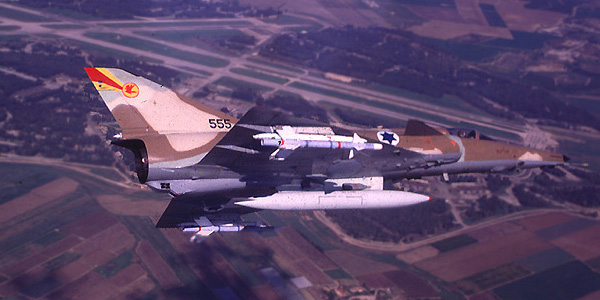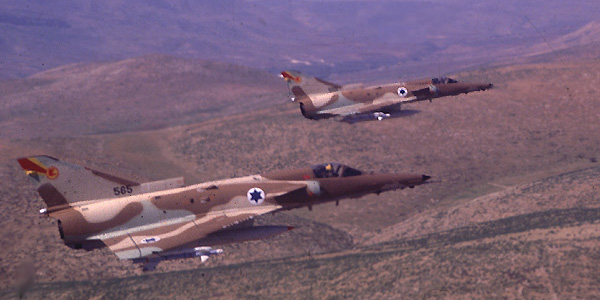
Today's classic warship, HMS Renown
Renown class battlecruiser
Displacement: 26,500 t.
Lenght: 750'
Beam: 90'
Draft: 25'8"
Speed: 31.5 k.
Complement: 967
Armament: 6 15"; 17 4"; 2 3"; 4 3 pdr
HMS Renown, lead ship of a class of two 26,500-ton battlecruisers, was built at Glasgow, Scotland. Completed in September 1916, she served with the Grand Fleet in the North Sea during the remaining two years of World War I. In 1920-21, following a refit, she carried the Prince of Wales on a voyage to Australia and America. During 1923-26, she was extensively refitted to increase her protection against gunfire and torpedoes. After a decade of further service, Renown was again reconstructed, greatly changing her appearance and giving her a modern anti-aircraft gun battery, much enhanced aircraft-handling facilities and up-to-date gunfire controls. This work was completed in September 1939, just after the outbreak of the Second World War.
Renown's high speed made her a valuable asset during World War II. In late 1939, she was sent to the South Atlantic to search for the German armored ship Admiral Graf Spee. She covered minelaying operations along the Norwegian coast in early April 1940 and, on the 9th of that month, engaged the German battleships Scharnhorst and Gneisenau, damaging the latter. Later in 1940 and into 1941, she operated with Force "H", based at Gibraltar to provide strategic presence in both the Atlantic and Mediterranean. While with Force "H", she participated in a bombardment of Genoa, Italy, in February 1941. After Home Fleet service in 1942-43, Renown was sent to join the Eastern Fleet in the Indian Ocean. Operating from Ceylon in 1944-45, she helped contain the Japanese in the East Indies. HMS Renown had brief post-war service in British waters and was sold for scrapping in March 1948.
|
Air Power
Israel Aircraft Industries KFIR
 |
A multi-role fighter that entered service in 1976 and was a mainstay of the IAF for many years.
The Kfir is one of the best examples of the 'evolutionary' approach to the development of fighters - an approach which has had impressive results in the history of modern military aviation. The first member of the Mirage family - the IIIC - was an excellent interceptor and air superiority fighter in its time, but had limited attack capability. Dassault's answer to this challenge was the development of the Mirage V, in accordance with Israeli specifications - but the French embargo on the sale off arms to Israel and its neighbors following the Six Day War kept the Mirage Vs from being delivered.
The IAI, with the IAF's enthusiastic backing, decided to develop improved models of the plane, that would meet Israel's needs. The first tests were conducted in late 1968, and it quickly became apparent that the Mirage 5's chief drawback was its power plant - the French Atar 9 engine - which provided relatively low thrust, compared to the large amount of fuel it consumed.
In order to improve the plane, its engine had to be replaced with a better one, and the engine chosen was General Electrics J79 jet engine. Implanting it in the Mirage required that certain changes be made in the engine's configuration: different devices within the engine were modified, the intakes were enlarged, the engine was encased with a titanium heat shield and the planes rear fuselage was shortened. After the prototype proved successful, the fuselage's aerodynamics were improved and a pair of winglets was placed above and to the front of the main wings, in a 'canard' configuration.
All in all, over 100 Kfirs were built, of the Kfir C2, Kfir C7 and double-seated TC2 Kfir models.
The kfir is not a leading plane, and was not meant to be so upon entering service, as th IAF entered the F-15 planes at the same time, which were considered to be the best in the world.
The first Kfir was handed over to the IAF in front of a large audience that had assembled for the ceremony at Israel Aircraft Industries' plant on the eve of Israel's Independence Day in 1975. The Kfirs that rolled out of the production line were first assigned to the famed 'First Fighter' Squadron, which had a tradition of being home to Heyl Ha'avir's first-line planes (from the Avia Messerschmitt, through the Spitfire, Mustang and Mystere, to the Mirage III). They were also assigned to a fighter squadron that had been established before the 1956 'Kadesh' Operation, and had been deploying Howards, Mosquitos, Mystere IVAs and Skyhawks. In the years that followed, the Kfirs saw service in a number of different IAF squadrons.
The Kfir was given its first chance to prove its mettle on November 9th 1977. Kfirs were sent to attack Tel Azia, a terrorist training base in Lebanon, and carried out their task with great success.
In 1979 an 'air war' began in the skies over Lebanon. The Syrians no longer contented themselves with sending out ground troops, and began to make their presence felt in the air.
On June 27th the first dogfight took place. On that day, F-15s and Kfirs were assigned to cover other planes that were attacking terrorist targets between Lake Kar'un and the port of Sidon. In the dogfight that ensued, five Syrian MiG-21s were shot down, and the Kfir registered its first kill - the only one to date.
In the next attacks against Lebanon, from the Litani Operation up to 'Peace for the Galilee', the Kfirs participated actively and proved their ability for pinpoint strikes at targets including bridges, structures and gun emplacements, for which they made use of their sophisticated systems. The Kfir was deployed in Operation 'Accountability' (1995) as well, and used against dozens of terrorist targets.
The Kfir registered success abroad, as well. It has been sold to several countries, and was even leased to the US Navy and Marine Corps for use in their 'Aggressor' Squadrons, where its excellent performance in aerial combat and low operating costs made it an ideal choice for helping American pilots train against a simulated enemy threat.
Specifications:
ORIGIN: Israel
CONTRACTOR: Israel Aircraft Industries (IAI)
TYPE: Single-seat interceptor, and fighter bomber.
CREW: One (2 in Trainer model )
POWERPLANT: One 17,864-lb. - thrust (18,700 lb.- thrust with emergency boost) afterburning General Electric J79-J1E turbo jet.
FIRST FLIGHT: October 19, 1970 (converted Mirage)
September 1971 (IAI Kfir)
END OF SERVICE: N/A
NUMBER BUILT: [~212 total]
Performance :
MAX SPEED: Mach 2.3 or 1,513 m.p.h. above 36,000 ft.
CEILING: 58,000 ft. OR 75,000 ft in a zoom climb .
COMBAT RADIUS: 546 mi. on an intercept mission.
Dimensions:
WING SPAN: 27ft.
LENGTH: 51ft.
HEIGHT: 15 ft
WEIGHTS: Empty 16,027 lb.; maximum loaded 36,300 lb.
Armaments:
Two 30-mm DEFA cannon with 280 rounds and
up to 13,400 lb. of bombs, rockets missiles beneath wings and fuselage.






All information and photos Copyright of:
Global Aircraft.org and
Israeli Weapons.com and other websites.
Hi aomagrat. Good to see you, thanks for the history of the HMS Renown.
Evening aomagrat. No rear main gun turret?







